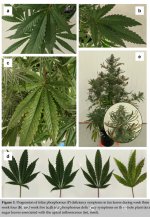Tomatoesonly
Active member
This is just an article, no lab work to back up anything. Anyone got any thoughts on this? It's not easy to keep calcium as low as this lady likes it.
LINK TO ARTICLE
Most relevant part : "As for ideal Ca levels, in water culture settings, assuming the use of distilled or RO water, I recommend about 40ppm of Ca after Day 30 of the flowering cycle. For any soil-like media that is calcium buffered, I recommend 0ppm of additional Ca after Day 30 of flower. As for leaf tissue quantities, the goal is to end up with 4-5 percent Ca in the leaf tissue during the last few weeks of harvest. If you have more than that, you’ve likely dented your yields and smoke quality in most cultivars."
LINK TO ARTICLE
Most relevant part : "As for ideal Ca levels, in water culture settings, assuming the use of distilled or RO water, I recommend about 40ppm of Ca after Day 30 of the flowering cycle. For any soil-like media that is calcium buffered, I recommend 0ppm of additional Ca after Day 30 of flower. As for leaf tissue quantities, the goal is to end up with 4-5 percent Ca in the leaf tissue during the last few weeks of harvest. If you have more than that, you’ve likely dented your yields and smoke quality in most cultivars."



